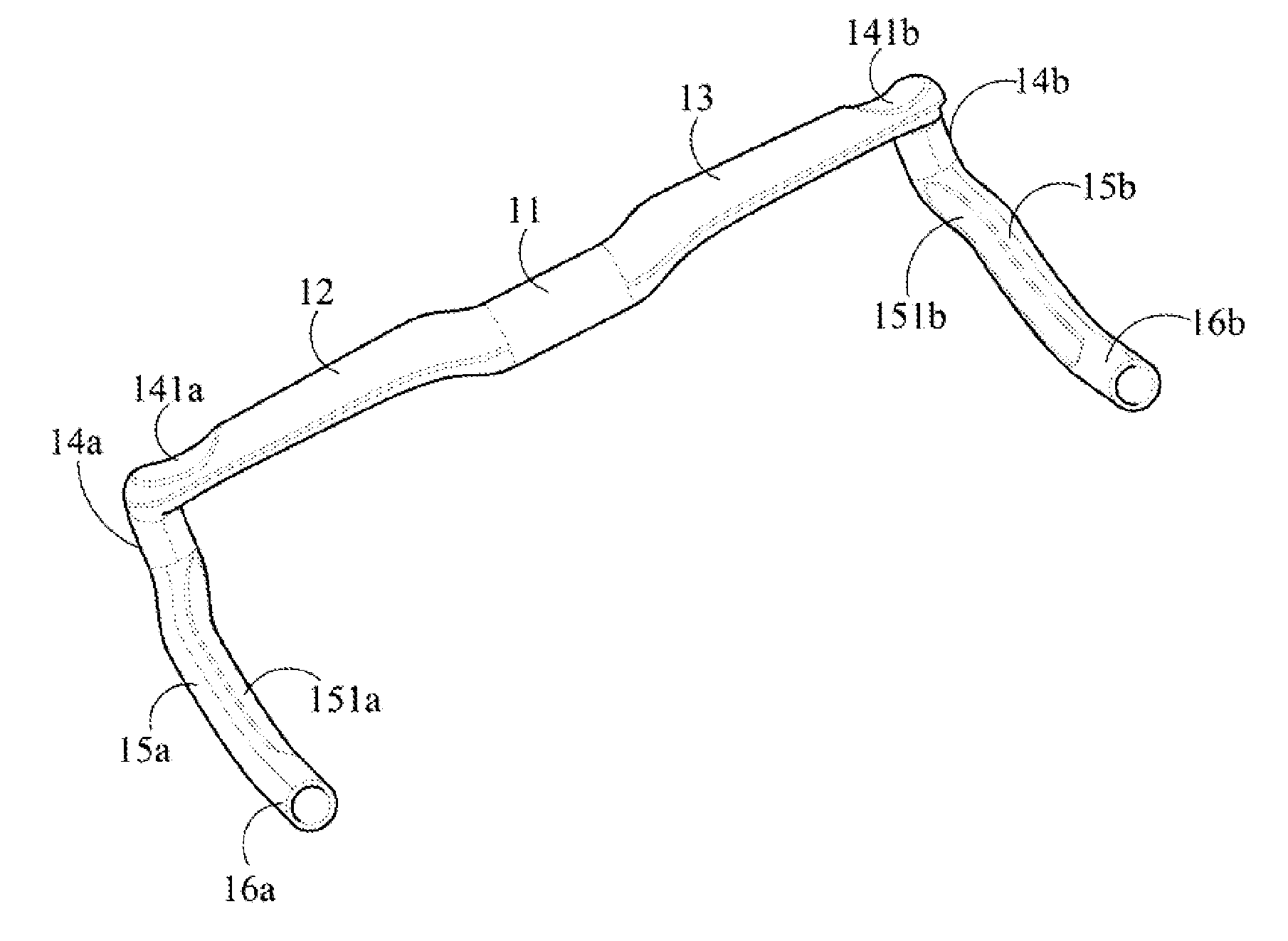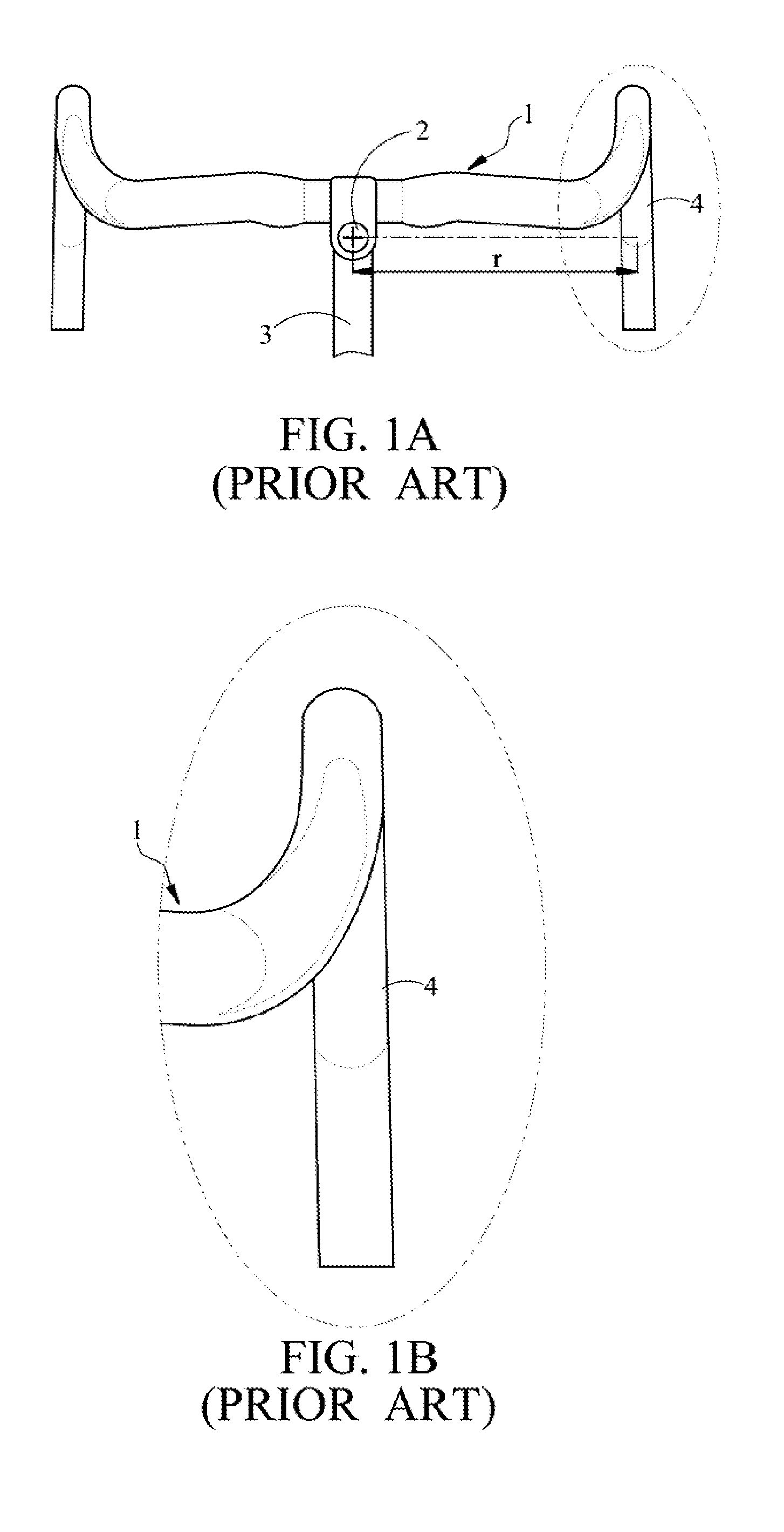Bicycle handlebar
a handlebar and bicycle technology, applied in the field of handlebars, can solve the problems of affecting the smoothness of turning made with the hands of the rider, and is easy to get out of control, and achieve the effect of avoiding hand sweating
- Summary
- Abstract
- Description
- Claims
- Application Information
AI Technical Summary
Benefits of technology
Problems solved by technology
Method used
Image
Examples
Embodiment Construction
[0029]The detailed content and technical description of the present invention are further described through embodiments. Referring to FIG. 2, FIG. 3, FIG. 4A, FIG. 4B, and FIG. 5. FIG. 2 is a three-dimensional view of a first embodiment of the present invention. FIG. 3 is a three-dimensional view of the first embodiment of the present invention in another direction, FIG. 4A is a plane view of the first embodiment of the present invention. FIG. 4B is a partial enlarged view of FIG. 4A. FIG. 5 is a schematic view of a first use situation of the first embodiment of the present invention.
[0030]As shown in the figures, a bicycle handlebar of the present invention can be a hollow tube body made of a metal material, for example, an aluminum alloy, or a carbon fiber composite material. As shown in FIG. 2, the bicycle handlebar of a first embodiment of the present invention includes a main body 11, pivotally connected to a bicycle. A first holding portion 12 and a second holding portion 13 a...
PUM
 Login to View More
Login to View More Abstract
Description
Claims
Application Information
 Login to View More
Login to View More - R&D
- Intellectual Property
- Life Sciences
- Materials
- Tech Scout
- Unparalleled Data Quality
- Higher Quality Content
- 60% Fewer Hallucinations
Browse by: Latest US Patents, China's latest patents, Technical Efficacy Thesaurus, Application Domain, Technology Topic, Popular Technical Reports.
© 2025 PatSnap. All rights reserved.Legal|Privacy policy|Modern Slavery Act Transparency Statement|Sitemap|About US| Contact US: help@patsnap.com



